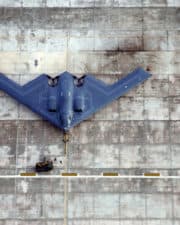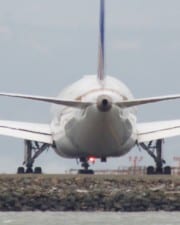Any lover of military aviation can tell you that the military has loads of different designations for the aircraft they use. A few are relatively straightforward, but most are vague, confusing and sometimes even contradictory.
As each military around the world has their own, oftentimes unique, aircraft designation system, this article will focus exclusively on the US military’s current designation system (yes, it’s had a few over the years) which may be similar or different to those of other militaries.
Each designation the US military has for its aircraft are based on the role(s) they are used for in service, allowing for easier identification by other branches of the US military who may not operate that specific aircraft within their own branch.
The current military aircraft designation system dates back to 1962, when the US Department of Defense enacted the Tri-Service Aircraft Designation System.
It originated after then-Secretary of Defense Robert McNamara became frustrated that different branches of the US military had different designations for the same aircraft, making inter-service cooperation needlessly more complicated.
This standardized not only the numbering designations of all types in US service, but also how each aircraft type was classified for easy identification. It has been used by the military ever since, and has been somewhat adopted by other militaries around the world who predominantly use American-made aircraft.
Aircraft Designations Explained
A – Attack

With their uncanny ability to rain hellfire down on enemy forces below, the US military was among the first to adopt aircraft whose express purpose was to attack ground forces. In US service, these aircraft carry an “A” designation.
The role of the US’s attack aircraft is very type-dependent. Some are designed to be as heavily armored and carry as many cannons and ammunition as possible, whilst others are designed to carry a large payload of light bombs.
Further still, some aircraft use missiles, and a mixture of cannons, heavy armor and bombs, to achieve this goal.
Unfortunately, due to the introduction of multirole fighters, the US Army and Marine Corps are phasing out their A-10 Thunderbolt fleets, though continue to use (and order) attack helicopters, most notably newer variants of the Boeing AH-64 Apache.
B – Bomber
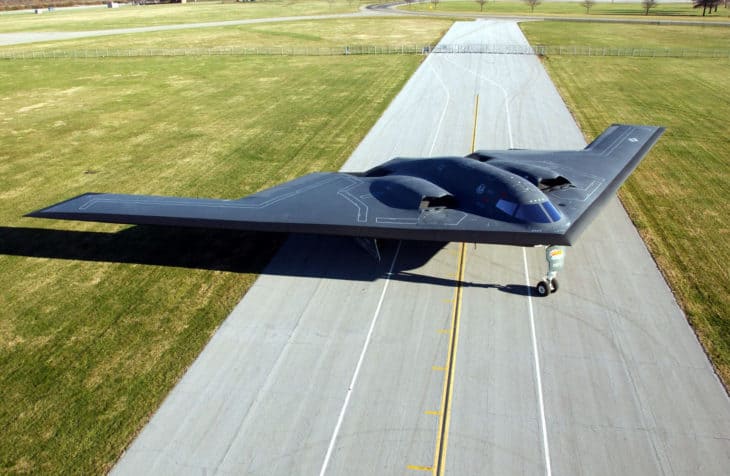
Though some say that the age of the dedicated bomber aircraft has come to an end, bombers have played a significant role in every conflict the US has played a part in since WWI.
While the “B” designation is one of the few aircraft designations to predate the Tri-Service Aircraft Designation System in use by all branches of the US military, the role they’ve played has changed considerably, from dropping conventional explosives to incendiary and even nuclear payloads before returning to more conventional payloads in recent times.
Thanks to the rise of multirole aircraft, there are few dedicated bomber aircraft left in active US service, with only the B-52 Stratofortress, B-1 Lancer and B-2 Spirit remaining.
C – Cargo
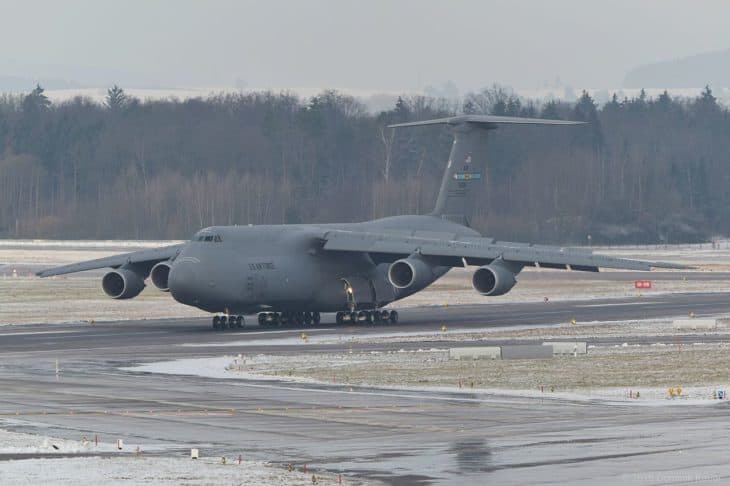
With hundreds of bases and thousands of servicemen and women across the world, the US military has a logistical nightmare when it comes to ensuring everything is where it needs to be at all times.
Whilst trucks and boats are also used, the bulk of the cargo, including everything from bullets to jeeps to personnel, is transported in aircraft like the C-130 Hercules, C-5 Galaxy and C-17 Globemaster.
Most US military cargo aircraft were commissioned by them for a specific role (eg. heavy lifting in the case of the C-5) though a few are converted commercial cargo models, most notably the 737-derived Boeing C-40 Clipper.
E – Electronic Warfare
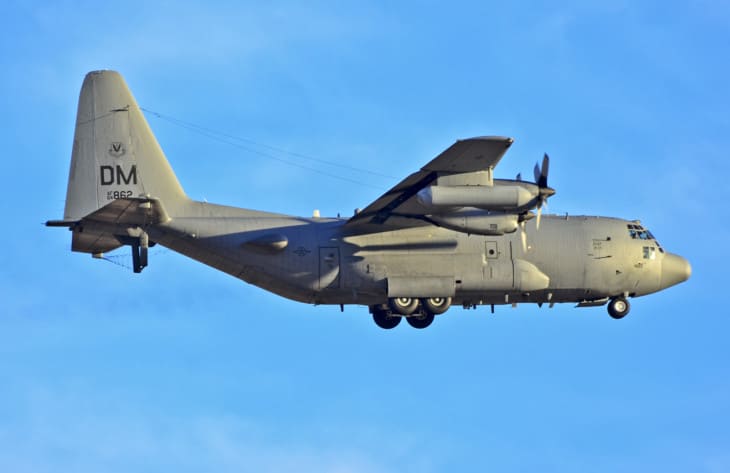
Almost every military around the world relies on radio signals for everything from communication to radars; systems have been developed to jam, intercept and/or deceive them.
These systems have been incorporated into aircraft, allowing them to be used in a variety of uses: from jamming communications during an attack, to gathering intelligence, to providing false or misleading information to enemy intelligence.
Collectively, such tactics are known as “electronic warfare” and aircraft designed for this purpose receive an “E” designation when in US military service. The most popular of such aircraft currently in service are the Boeing E-3 Sentry, EA-18 Growler and Lockheed EC-130 Compass Call.
F – Fighter

Perhaps the most famous aircraft designation, “F” stands for “fighter”. Fighters are aircraft that are primarily built for air superiority, eg. Aerial fighting (typically in the form of dogfighting) to gain control of a given bit of airspace.
The role of fighters in the modern US military is very different to those back in the 1960s. Today, they are not just for air superiority, but also aerial interception, escort, aerial bombing, and even light reconnaissance and electronic warfare too.
Some of the most famous fighters currently used by the US military include the vaunted F-15 Eagle, stealthy F-22 Raptor and the highly controversial F-35 Lightning.
TG – Glider
Although gliders are not used by the main US Air Force, they maintain a fleet of various gliders for use by cadets at the US Air Force Academy.
As of 2023, the USAF is the only branch of the US military to use gliders, operating three types of gliders: the German-made TG-15A and TG-15B (military designations for the Schempp-Hirth Duo Discus and Discus 2) and TG-16 (military designation of the DG Flugzeugbau DG-1000S).
H – Search And Rescue
Primarily an aircraft designation carried by Coast Guard aircraft, rather than those of the Navy, Army or Air Force, the “H” designation is used to denote any aircraft that is used for search and rescue (SAR) purposes.
These aircraft are used to locate, and ultimately aid, lost or distressed ships, aircraft and/or mountain hikers, as well as providing immediate assistance and first aid as required.
As most search and rescue aircraft tend to be helicopters, a misnomer has arisen that a “H” designation stands for “helicopter”. That being said, some foreign militaries, such as the UK, do use “H” to signify helicopters (eg. Sea King HAS.2 and Chinook HC.2).
K – Tanker
With most conflicts now taking place thousands of miles away from the US mainland, getting US military aircraft to the battlefield is more of a logistical problem than most people would imagine.
To get from the US to the Middle East in an F-35 would take nearly 20 landings for refueling, in the airspace of dozens of countries, both friendly and unfriendly.
With advancements in air-to-air refueling technology, large cargo aircraft like the C-135 can exchange their conventional payloads for kerosene (aviation fuel) to allow other military aircraft to refuel mid-flight, allowing them to reach the battlefield quicker and safer.
Due to their payload being kerosene, these aerial tankers are given a “K” designation. In the case of the C-135, tanker models are known as the KC-135 Stratotanker.
M – Multi-Mission
US special forces are arguably the most skilled of all the people in the US military. To assist them in their goals, the US military maintains a fleet of aircraft solely for their use.
These aircraft carry an “M” designation, standing for “multi-mission” given the numerous different kinds of missions US special forces are used on.
The most common of these aircraft are the Lockheed MC-130s, who are in charge of the infiltration, exfiltration and resupply of special forces behind enemy lines, either directly, or by providing tanker services to smaller aircraft performing those roles (eg. the V-22 Osprey).
Other “M” designated aircraft include the MC-12W Liberty, C-12 Hurons modified SIGNIT uses, which can be used to alter special forces of changes on the ground, or confirm a mission has been accomplished.
O – Observation
Arguably the oldest military use for aircraft, “O” designations indicate a particular aircraft is used for observation or reconnaissance purposes.
Observation aircraft differ from other types of surveillance aircraft in that they are unarmed both in terms of conventional and unconventional weaponry, only being able to observe and record what they can see from the aircraft.
Historically, many US military observation aircraft have been helicopters – such as the Hughes OH-6 Cayuse or Bell OH-13 Sioux – or aging fighters or bombers being repurposed during wartime, the US military’s only “O” designated aircraft is the OC-135B, a C-135 modified for observation purposes as a part of the Open Skies Treaty.
P – Maritime Patrol
Where the Army and Air Force have traditionally employed “O” designated aircraft for use over land, the Navy has employed similar aircraft with “P” designations to survey the water, both its surface and what lies below.
They typically operate ahead of US fleet movements, scouting for everything from mines to enemy battleships to ships in distress and can be equipped with everything from anti-ship weapons to sonar buoys to air dropped survival packs.
Although there are several helicopters that have been deployed as maritime patrol aircraft, the vast majority are fixed wing aircraft as they are often required to fly several thousand miles per flight, which is not currently possible with most helicopters.
Q – Unmanned Aerial Vehicle
Though drones have become increasingly popular in the civil market over the last 10 years, the US military has long been interested in unmanned aerial vehicles, or UAVs for short.
Indeed, military UAVs have evolved considerably. Originally, they were used for target practice and testing purposes but have taken on a more active role in combat and reconnaissance in recent decades.
Today, the US military operates three UAVs: the MQ-1 Predator, the MQ-9 Reaper and the MQ-1C Gray Eagle.
R – Reconnaissance
Similar to observation aircraft, reconnaissance aircraft have also long been used by the US military, and thus carry their own “R” designation.
Equipped with powerful cameras, radars and other spying equipment, US reconnaissance aircraft like the RC-135 routinely fly over combat zones to collect data on enemy positions, troop movements and gather electrical intelligence that can assist allied troops on the ground or allow for a faster response in the event of a troop buildup.
Many newer reconnaissance aircraft in the US fleet are drones, as they are able to interpret and transmit data in real time, whilst satellites have begun to replace many of the older reconnaissance in the US fleet.
S – Anti-Submarine Warfare
As arguably the single most dangerous thing to ships and aircraft at sea, the US Navy maintains a fleet of anti-submarine aircraft, to protect allied ships and aircraft, counter, and if necessary, sink enemy submarines.
Often used hand-in-hand with maritime patrol aircraft, anti-submarine aircraft have a variety of tools at their disposal, from depth charges to naval mines to homing torpedoes.
Due to recent cost cuts, many anti-submarine aircraft are also used as maritime patrol aircraft, and hence carrying the “P” designation. That being said, the US Navy does operate a series of helicopters which are used for anti-submarine warfare (among other roles), most notably the Sikorsky S-70 Seahawk.
T – Trainer
Regardless of whether you have prior flight training or not, to be a pilot in the military, you need to undergo military flight training to ensure you can fly the military way.
All branches of the military have training aircraft to teach everything from flight basics to flying particular types.
As trainers can come in all shapes and sizes – from the small T-41 Mescalero (military designation for the Cessna 172) to the much larger T-1 Jayhawk (militarized variant of the Hawker 400 business jet) – they are given the letter “T” standing for “trainer” to distinguish them from other aircraft types.
Training aircraft are typically unarmed (instead armed with sensors to mimic weapons), and as such rarely fly outside of the airspace of the country they operate from.
U – Utility
One of the more recognizable aircraft designations, thanks to the inclusion of aircraft like the UH-60 Black Hawk in military-themed movies and TV shows, “U” designated aircraft are arguably the workhorses of the US military.
“U” designated aircraft are designed for combat support missions, a broad term including everything from transportation, to medical evacuations, to even light surveillance/observation.
Their roles often depend on the nature of the missions the soldiers they’re assigned to are doing.
By far the most famous utility aircraft the US military has ever used in the Bell UH-1 Iroquois, otherwise known as the Huey. Current utility aircraft used by the US military include the UC-35, U-28A Draco (Pilatus PC-12) and UV-18B Twin Otter.
V – VIP Transport
Aside from protecting our skies, the military is also in charge of transportation for various VIPs, from POTUS and the VP, to high-ranking government and military officials.
These aircraft are typically private jets that have been upgraded with the latest doomsday survival features, such as electromagnetic pulse (like those generated by the detonation of nuclear weapons) protection, advanced communication systems and larger fuel capacities for a longer range.
The most famous of these such aircraft would be the Boeing VC-25A, better known as Air Force One. Other aircraft with “V” designations include the VC-32 and VC-37, both of which serve intermittently as Air Force Two, the aircraft of the Vice President of the United States.
W – Weather Reconnaissance
In the days before satellites, aircraft were used to monitor meteorological conditions which were then used to produce weather reports or to gather data during freak weather and/or atmospheric occurrences.
These aircraft are often reconfigured bombers or cargo aircraft, as their large internal carriage capacity is perfect for carrying all the data collecting instruments and computers needed.
And whilst most weather reconnaissance aircraft have since been replaced by faster, cheaper and generally more accurate satellites, the US military does operate a few WC-130J Hurricane Hunters (modified C-130J Hercules) and WC-135 Constant Phoenixes (modified KC-135s).
X – Experimental
When the Tri-Service Aircraft Designation System was introduced back in 1962, the world was in the midst of the Cold War, when aircraft technology was constantly being pushed to new extremes.
Many of these technologies and concepts were evaluated by the US military for use in future military aircraft by putting them in/on an aircraft and having them be flown by military test pilots .
As these aircraft were experimental and only for proof of concept use, these aircraft were given “X” designations indicating their experimental nature.
In recent years, the “X” designation has also been given to fighters undergoing evaluation for upcoming contracts, such as in the case of the Joint Strike Fighter program that produced the F-35 (X-35) and X-32.
Y – Prototype
When the military are in need of a brand new aircraft – not just a modernized version of a pre-existing aircraft – they solicit designs from aircraft manufacturers for evaluation. Of the dozens of designs they receive, two are then picked to progress to the prototype phase.
As these aircraft are being tested by and for the military and modified to their needs as appropriate, these aircraft are not designated experimental aircraft, nor are they given a full aircraft designation.
To that end they are given a Y designation followed by the letter of the aircraft type they are, eg. “YB” would be a prototype bomber, and “YF” would be a prototype fighter.
If successfully purchased by the military, the aircraft will be redesignated by the military and drop the “Y” designation. For example, when the military accepted the Lockheed YF-22, it became known as the F-22 Raptor.
Multi Letter – Modified Variant Use
Some aircraft, however, have multiple letters in their designation. Typically, this denotes an aircraft that has been modified for a different purpose other than what its base aircraft was initially designed for.
Perhaps the most famous of these aircraft is the RC-135 Rivet Joint. The base model for this aircraft was the C-135 transport aircraft, which was then modified for reconnaissance rather than transportation missions, hence its designation “RC” – Reconnaissance Cargo.
It must be stated, however, that this is not always the case with some multi letter designations, such as with the F/A-18 Hornet, which is strictly an attack aircraft, not a fighter-attack aircraft.
This particular designation arose due to plans by the Navy to have both a fighter (F-18) and attack (A-18) variant of the same aircraft, which were collectively referred to as the F/A-18. Ultimately, the fighter variant was shelved but the F/A-18 designation stuck despite there being no precedent for slashes in an aircraft designation.
Related Posts




